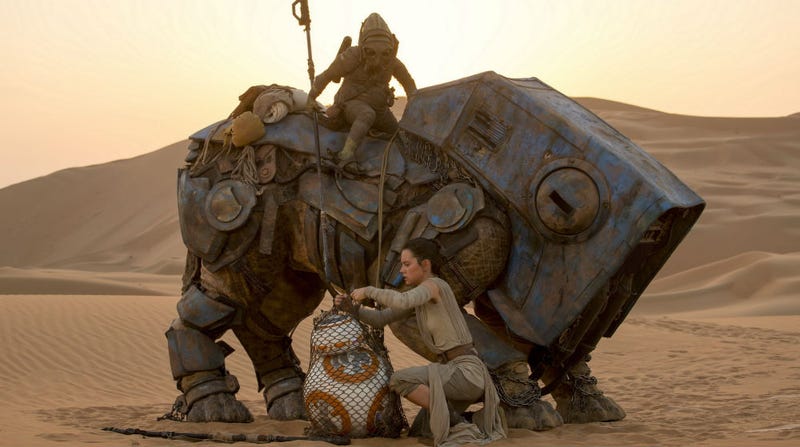Via io9.com:
Star Wars and visual effects have always developed in tandem. The original trilogy is known for its groundbreaking practical effects; the prequel trilogy was made with landmark digital effects. Now, with The Force Awakens, both the practical and the digital have been fused in ground-breaking ways.
The blending of these types of effects not only helped change the story of the movie, but the canon of Star Wars itself. So we talked to Industrial Light and Magic’s Roger Guyett and Patrick Tubach—both visual effects supervisors on The Force Awakens (Guyett was also the second unit director on the film), both nominated for the Best Visual Effects Oscar this year—to find out how Star Wars might have revolutionized special effects for a third time.
“You’re pushing these two notions so far around they actually join back to themselves,” Guyett told io9. “One way around the block, you’re going completely old school. And at the same time, you’re taking contemporary technology and you’re pushing that to a point where it’ll become so seamlessly engaged and blended with what’s really going on in front of a real camera. That was our fundamental at every step. To make it feel like those events were really happening and that it was a completely immersive experience.”
That blending of new and old can be seen everywhere in the movie, but one great example is with BB-8, the franchise’s new droid. Throughout the film, BB-8 is an elaborate mix of practical effects, digital effects or, in most cases, both.
“The best performances we all got out of him was when he was directly being rod-puppeted,” said Guyett. “Because with a remote control, obviously the operator doesn’t have that absolute connection to that creature. There’s a lag. There’s a delay.”
So if the best version of the character meant that a puppeteer had to be physically standing next to a practical, full-size BB-8, that creates some huge challenges in visual effects. There’s a human or two standing in the frame at all times. That person has to be erased, as well as all evidence of their movement.
Click below to read the full article.

